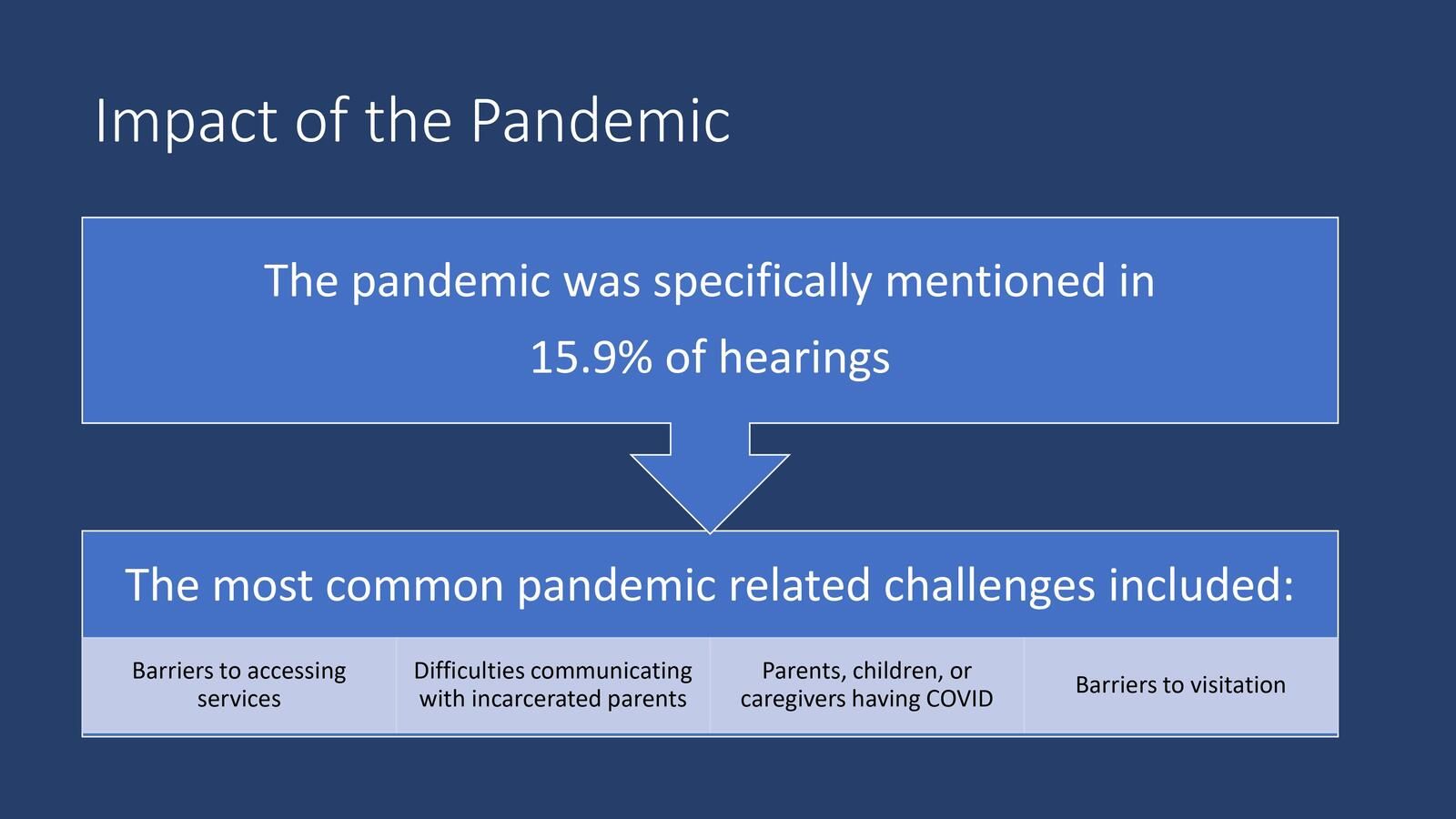October 5, 2023
By Teri Deal
In the wake of the 2020 pandemic, courts swiftly turned to remote hearings to keep child welfare cases moving. Now that the social-distancing requirements of the pandemic are behind us, many courts continue to use remote hearings, acknowledging their ability to alleviate barriers for parents like arranging transportation, obtaining childcare, and missing workdays.
While most dependency courts anecdotally report increased parent attendance in remote hearings during the pandemic, some reported the opposite. Unfortunately, there is limited empirical evidence to describe the effect remote hearings have on parent attendance. Many courts do not track the method of the hearing (in-person, hybrid, or remote) in their case management system, nor do they consistently track parties present or how parties appeared (in-person or remotely) in a way that is easily aggregated without intensive case file review. A 2020 study in Nevada showed no statistically significant differences between parent attendance at in-person compared to remote hearings in child welfare cases.
NCSC's 2021 Study of Virtual Child Welfare Hearings observed hundreds of remote hearings in 17 courtrooms in 5 states. The average appearance rates of mothers (49%) and fathers (38%) were slightly below what is typically seen in person (60%); however, appearance rates for parents differed widely across the non-randomized sample, and the study did not have appearance rates from before the pandemic to compare. How parents were notified of hearings and the support they received to access the remote hearings varied greatly across jurisdictions in Arizona, Michigan, Nebraska, Texas, and Washington. A PowerPoint presentation on that study is available.
Ultimately, it is still difficult to say that remote hearings increase appearance rates across the board and for all families in a jurisdiction. While some courts have had that experience, others have not. The range of practice related to hearing notices, access to technology, and support for accessing hearings are factors. It may be that some parents who would not attend a hearing in person due to transportation, childcare, or warrants may be able or choose to do so remotely, while other parents who would be able to attend the hearing in person may not have the skills, equipment, or connectivity to do so virtually.
To understand how remote hearings impact appearance in hearings, courts are encouraged to systematically collect data on both the method of hearing (in-person, remote, or hybrid) and the parties present. Look for updates to NCSC's Study of Virtual Child Welfare Hearings coming soon.
Has your court experienced a change in attendance when using remote hearings? Share your experiences with us. Please contact Knowledge@ncsc.org or call 800-616-6164. Follow the National Center for State Courts on Facebook, Twitter, and LinkedIn.
